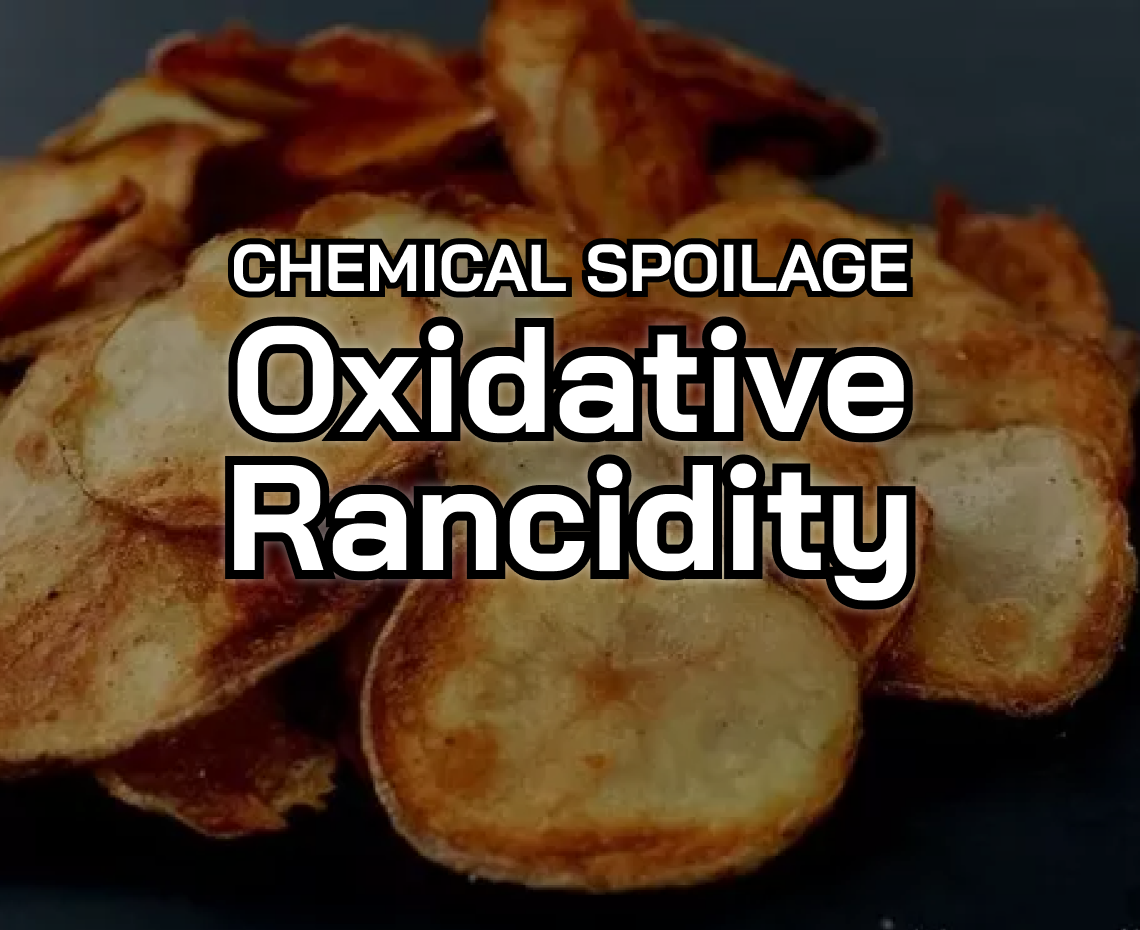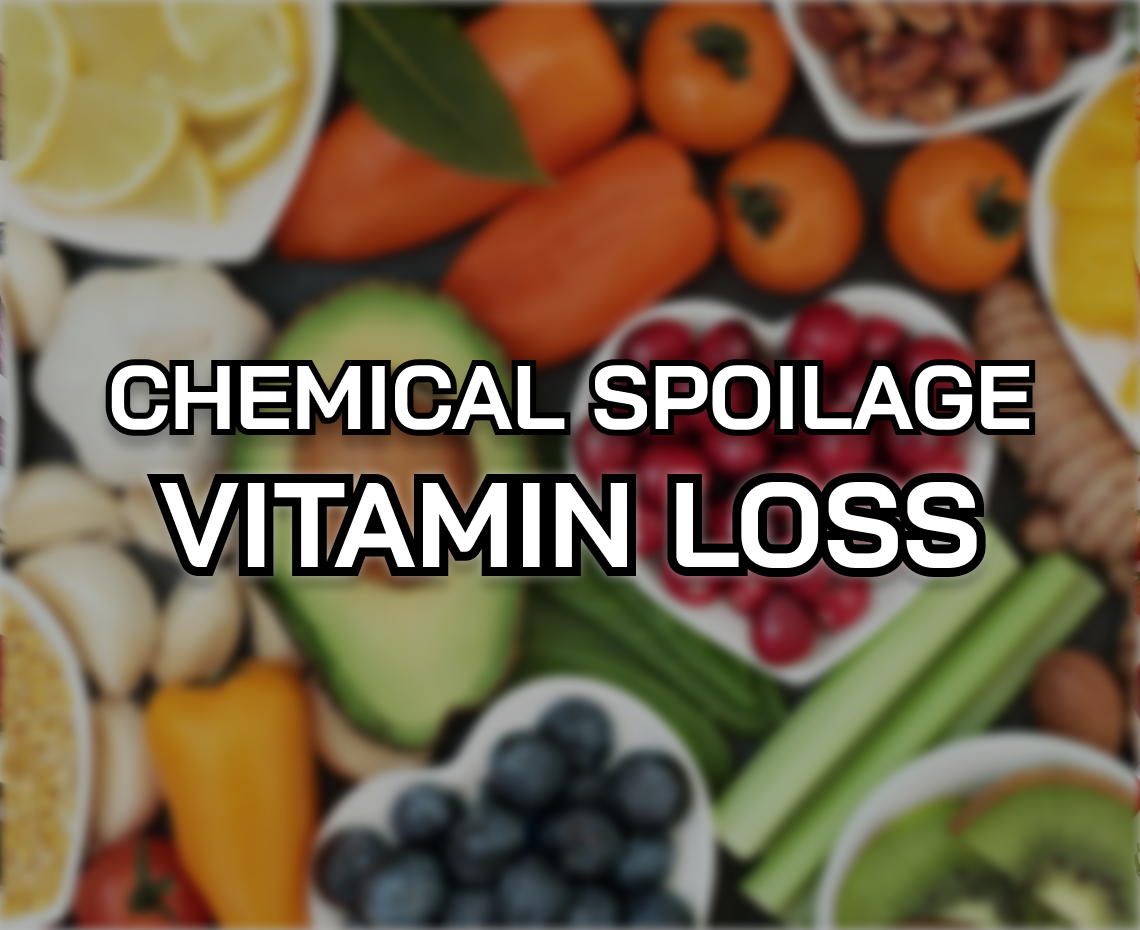Chemical Spoilage: Senescence
.png)
What is Senescence?
Senescence is the process of deterioration with age. But what causes foods to deteriorate with age? For simplicity, it is best viewed as a lack of maintenance or upkeep in the food's tissue. When food can no longer maintain itself (due to the cessation of maintenance activities), the challenging storage environment will cause food to deteriorate over time.
Relationship Between Senescence & Metabolic Activity
Living things keep their systems running smoothly through metabolic activity, the reactions of life. These reactions maintain tissue integrity, cell viability, growth, regeneration, and replication. Each reaction requires energy, which living systems acquire through food and photosynthesis. The harvesting process cuts off food from these energy supplies. However, in harvested fresh foods, some residual metabolic activity remains. This residual activity is essential to preserving quality. But once the stored energy is depleted, this residual activity stops, and senescence occurs, causing spoilage.
Senescence only occurs in food products that still have this residual metabolic activity. It plays no role in frozen, low-moisture, or thermally processed foods where metabolic activity has ceased. Freezing prevents senescence by slowing and almost stopping metabolic activity. Drying stops metabolic activity by reducing water activity. Lastly, thermal processing terminates metabolic activity by denaturing or inactivating the enzymes that catalyze the reactions of life.
Senescence Is Often Overlooked
Senescence, or deterioration with age, is often an enabling factor promoting other chemical and microbial spoilage mechanisms. It is often overlooked because it promotes more visible modes of shelf-life failure.
An Analogy for Understanding Senescence
Senescence: An Abandoned House
Consider an abandoned house. When first left, the house will weather storms and other inclement conditions. However, things will start to break down without the owner's care and maintenance. It might be the roof or a window that fails first. Eventually, the weather will penetrate, and other damage will occur. Ultimately, the house will become a neglected ruin. The first mode of failure (breaking window or leaky roof) is due to the lack of upkeep, even though the weather may be the more obvious cause of the house's destruction. The house fell victim to inclement conditions without maintenance to keep it strong.
In the analogy above, maintenance on the house represents an energy input. We have previously established that metabolizing food products require energy to keep their systems working correctly. Without energy, the systems fail, and the product cannot withstand the pressures of other modes of spoilage.
Examples of Senescence in a Food Product
Senescence in Bagged Salad
Turning our attention to a food product, consider a bagged salad. Most people are familiar with salad becoming a liquid green mess when it gets forgotten in the back of the refrigerator. This catastrophic failure results from either bacterial activity, such as soft rot, or the release of enzymes from the product as it breaks down. Now, while this green mess is often the spoilage noticed by consumers, senescence always precedes this catastrophic failure. Senescence, in this product, is the salad losing its brightness and crispness as metabolic activity depletes energy supplies. To reiterate, this loss of desirable appearance and texture is the first failure mode, followed by enzymatic or bacterial catastrophic failure.
Senescence in Strawberries
A second, more complicated example is strawberries. Most readers will be familiar with moldy strawberries. Mold is the most common mode of catastrophic failure for berries and is responsible for their limited shelf-life. Fresh strawberries are metabolically active, so they deplete energy stores. Once all the energy is consumed, the cessation of metabolic activity will make the berries more susceptible to infection by mold, which is already present on the surface.
Other factors often compound the effects of senescence. In the case of strawberries, dehydration (the loss of water) also impacts the surface of the berries. The loss of blush on the surface is a symptom of this dehydration. Both modes of failure co-occur and promote one another. So which mechanism is first? That is a classic chicken and egg question. Bottomline, the strawberries often go through multiple failure mechanisms in tandem, making storage iffy at best.
As we examine the various modes of chemical failure in future installments, we will show that multiple failure modes are the norm and not the exception. In the next installment, we will consider over-ripening.


